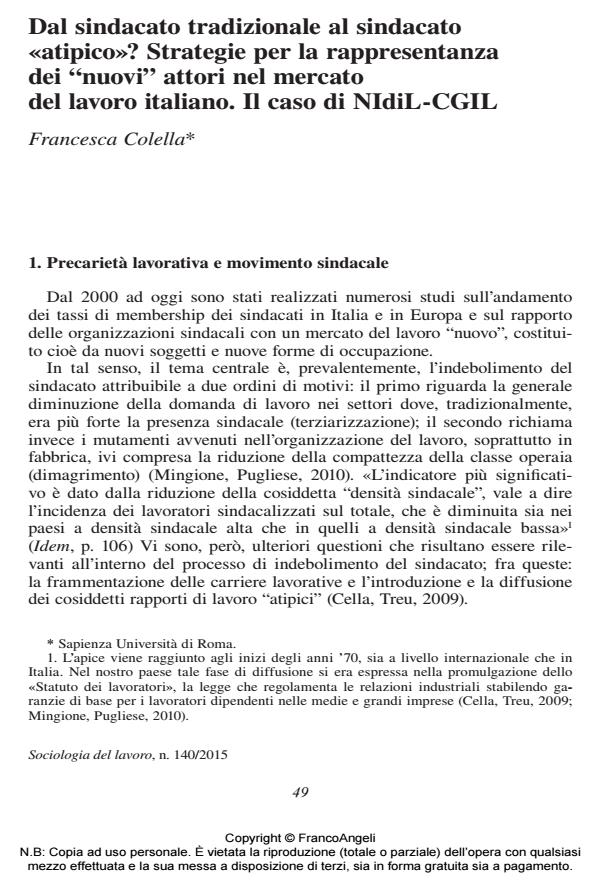From Traditional to «Atypical» Trade Union? Strategies for the Representation of "New" Actors in the Italian Labor Market. A Case Study of NIdiL-CGIL
Journal title SOCIOLOGIA DEL LAVORO
Author/s Francesca Colella
Publishing Year 2015 Issue 2015/140
Language Italian Pages 15 P. 49-63 File size 120 KB
DOI 10.3280/SL2015-140004
DOI is like a bar code for intellectual property: to have more infomation
click here
Below, you can see the article first page
If you want to buy this article in PDF format, you can do it, following the instructions to buy download credits

FrancoAngeli is member of Publishers International Linking Association, Inc (PILA), a not-for-profit association which run the CrossRef service enabling links to and from online scholarly content.
Since the beginning of the new millennium, numerous studies have examined trends in trade union membership and the relationship of the trade unions to a ‘new’ labor market comprising new categories of workers and new forms of employment. Changes in this market over the last 20 years have weakened trade unions, and several important studies of trade union membership have noted that trade union action is concentrated excessively on traditional workers. The main aim of this paper is to examine the strategies of trade unions like CGIL and to identify those methods and goals of good practice for representation which led to dedicated collective bargaining for ‘atypical’ workers. The birth of CGIL affiliate NIdiL in 1998 was an innovative step for the unions in their goal of improving working conditions and encouraging procedures for the stabilization of temporary workers through the redefinition of the concept of trade union representation.
Keywords: Job insecurity, trade union representation, inclusive approach to collective bargaining, individualization
- Moving Right: The Changing Role of the Left in Neoliberal Europe Lorenzo Cortinovis, pp.159 (ISBN:978-3-031-96331-5)
Francesca Colella, Dal sindacato tradizionale al sindacato «atipico»? Strategie per la rappresentanza dei "nuovi" attori nel mercato del lavoro italiano. Il caso di NIdiL-CGIL in "SOCIOLOGIA DEL LAVORO " 140/2015, pp 49-63, DOI: 10.3280/SL2015-140004